High employee turnover. HR compliance headaches. Costly mistakes.
These common HR issues for small businesses and challenges plague small businesses.
Why? They lack the resources and expertise of large companies.
This blog dives into the proven data.
You will learn what drives employee turnover. How to manage HR compliance. And cost-effective HR solutions for small businesses.
What is Employee Turnover for Small Business Owners?
Employee turnover occurs when employees leave a company and must be replaced. This is a critical issue for small businesses because it can be both costly and disruptive. For instance, it can take a significant amount of time and resources to recruit, hire, and train new employees. Discover how to minimize employee turnover and optimize small business human resource management with this comprehensive guide.
Types of Employee Turnover
Understanding the types of employee turnover can help businesses pinpoint their issues and develop targeted strategies.
Voluntary Turnover
Voluntary turnover happens when employees choose to leave the company. Common reasons include receiving better job offers, dissatisfaction with their current role or workplace, and sometimes poor workplace conditions. If many employees are leaving voluntarily, it might indicate underlying problems like low job satisfaction or lack of growth opportunities. Therefore, conducting exit interviews can provide insightful feedback for improvement.
Involuntary Turnover
Involuntary turnover occurs when employees are asked to leave by the employer. This can happen due to various reasons such as underperformance, misconduct, or company restructuring. Small businesses need to handle these situations with transparency and fairness to avoid legal complications and maintain workplace morale.
Factors Contributing to Employee Turnover
Identifying the factors contributing to employee turnover can provide a clearer strategy for retention.
Cost Implications
The financial impact of employee turnover can be substantial. For hourly workers, the average turnover cost is $1,500 per person. However, replacing technical or supervisor positions can exceed an entire year’s salary, reflecting the specialized skills and experience these roles require.
Hiring Challenges
A significant challenge in managing turnover is hiring replacement employees. According to data, 75% of employer firms tried to hire workers in 2021, with 44% of them finding it very difficult compared to 27% in 2018. The top reasons were a lack of job applicants (78%), applicants lacking job-specific skills or experience (56%), and competition from other employers (40%).
Impact of Employee Turnover
High employee turnover does more than just affect the bottom line; it can have broad and far-reaching impacts on a business’s operations.
Productivity Loss
When employees leave, their responsibilities must often be absorbed by the remaining staff, leading to increased workloads and stress. This can reduce the overall productivity and efficiency of the team. In small businesses, where resources are already limited resources, this can strain the company even more.
Morale and Financial Impact
High turnover can also negatively impact team morale. Constantly having to adjust to new team members or deal with understaffing can lead to frustration and decreased job satisfaction for remaining employees. Moreover, the financial costs related to recruitment, training, and lost productivity add up quickly.
Key Issues Facing Human Resources in Small Businesses
Navigating common HR challenges faced is essential for small business success.
Biggest Challenge: Employee Retention
One of the most significant challenges HR departments face today is retaining talent. With a competitive job market, small businesses often struggle to offer the same level of benefits, career progression, and work-life balance that larger companies can provide.
Key Issues in HR
Other key issues include managing compliance with labor laws, ensuring fair treatment of all employees, and maintaining a healthy company culture. These challenges are critical because failing to address them can lead to increased turnover and legal issues.
Critical Factors for Effective HR Management
Developing an effective HR organization involves focusing on recruitment strategies, employee training and development, and fostering an inclusive workplace culture. Small businesses can benefit by managing human resources and implementing robust HR policies that align with their business goals and culture.
Understanding these aspects of employee turnover and addressing them proactively can help small businesses mitigate the costs and disruptions associated with high turnover rates.

The average Metrobi driver rating is 4.97 / 5.00
Metrobi drivers are highly rated by local businesses for their professionalism and reliability, giving you peace of mind with every delivery.
Benefits of Understanding HR Compliance Challenges for Small Enterprises
-
Avoid penalties and fines by complying with legal standards.
-
Improve employee relations through structured HR practices.
-
Promote fair treatment and a better work environment.
Legal Compliance
Understanding HR compliance helps small businesses avoid costly fines and penalties. Laws around employment are strict, covering areas like wages, hours, and workplace safety. Small businesses that overlook these areas risk severe consequences.
Ensuring legal compliance also means providing fair treatment to employees. Employees who feel they are treated fairly are less likely to leave the organization. This can significantly impact employee retention, a notable concern for small businesses. This leads to fewer legal disputes and a more stable workforce.
How and Why Is HR Different in Small Businesses?
Small businesses often lack the dedicated, HR resources and teams that large companies have. In smaller firms, HR tasks might fall to a manager or owner who may not have specialized HR training. This leads to missed updates in laws and policies, increasing the risk of non-compliance.
HR in small businesses often has to be more dynamic and adaptable. Larger firms have more resources to dedicate to developing comprehensive HR plans. Small enterprises must be agile, customizing policies to fit their specific needs and limitations.
Improved Employee Relations
Understanding HR compliance leads to improved employee relations within a company. A compliant workplace is structured and transparent, reducing the odds of conflicts. When employees know that rules and regulations are in place and followed, trust within the organization grows.
Role of HR in Small Businesses
HR in small businesses is more hands-on and personalized compared to larger firms. This direct involvement helps in addressing issues quickly. Smaller teams foster closer relationships, and HR employees can directly influence the work environment.
Smaller companies must ensure HR policies are clear and well-communicated. This transparency helps in conflict resolution and promotes a structured work environment.
Reduced Legal Expenses
Understanding compliance reduces the risk of legal disputes, saving money on potential litigation. Even minor non-compliances can lead to costly lawsuits. Small businesses are less equipped to handle such financial strains compared to large corporations. By adhering to HR laws, companies avoid these expenses.
Better Recruitment and Retention
A clear understanding of HR compliance helps in crafting better recruitment strategies. Candidates are attracted to companies that show they care about legal compliance and fair treatment. This compliance-oriented approach not only helps in attracting talent but also in retaining it.
HR compliance lends credibility to a company’s recruitment process. Small businesses that efficiently manage compliance issues build a positive reputation, making them desirable places to work.
HR Analytics in Small vs. Large Companies
HR analytics in small companies differ from those in larger firms primarily in scale and complexity. Large firms use advanced analytics tools and have data analysts dedicated to HR metrics. Small businesses may not have these resources but can still benefit from basic, HR automation tools and data analysis.
Understanding basic HR analytics helps in identifying trends in employee turnover, job satisfaction, and performance. Insights gained can then be used to improve HR practices, leading to better recruitment and retention strategies.
Effective HR Management: HR Issues for Small Businesses
Recruiting the right people is crucial for small companies. A small business can’t afford to hire the wrong person. Therefore, investing time in finding the best candidate saves resources in the long run. This step involves creating accurate job descriptions, using multiple channels for job posting, and conducting thorough interviews.
Onboarding is the next step once a candidate is chosen. For small companies, a structured onboarding process can lead to faster productivity and higher retention rates. You should introduce new hires to company culture, clearly outline the job description and expectations, and provide initial training.
Employee Training and Development
-
Enhance employee skills and productivity.
-
Promote career growth within the company.
Continuous learning and development keep employees engaged and improve overall productivity. Training should not stop after onboarding. Regular workshops, courses, and mentorship programs can help employees grow within the company, which potentially reduces turnover.
Compensation and Benefits
-
Offer competitive salaries and benefits.
-
Boost employee retention and satisfaction.
Competitive pay is fundamental for retaining talent. Small companies should research industry standards for salaries and ensure they offer competitive compensation packages too. Benefits such as health insurance paid time off, and retirement plans also play a significant role in employee satisfaction.
Performance Management
-
Provide regular feedback and evaluations.
-
Set clear goals and performance metrics.
Performance management is more than just yearly reviews. It involves continuous feedback and coaching. Employees need to know how they are doing regularly to stay on track and improve. Using a dedicated performance management software tool can help with this.
You can set clear, measurable goals for each role and evaluate employee performance based on these metrics. You can use constructive feedback to help employees improve.
Legal Compliance
-
Understand and comply with HR laws.
-
Implement fair and consistent policies.
Compliance with local and federal labor laws is non-negotiable. Small companies can face stiff penalties for non-compliance. Regularly you should review and update HR policies to reflect current laws. You should communicate these policies to employees to prevent misunderstandings.
Effective human resource management is indispensable for the success of small businesses. HR ensures that the right people are hired, trained, and retained while complying with legal standards. Discover our comprehensive guide on small business human resource strategies to optimize your team’s productivity and compliance.
Ready to Tackle HR Challenges?
High employee turnover, legal compliance, and cost-effective HR management remain tough for small businesses. Understanding these can save money, improve relations, and make hiring easier.
Your business benefits from mastering HR. Keep up with local and federal HR laws. It is better to write clear policies and train your team. Conduct exit interviews and offer competitive benefits.

























